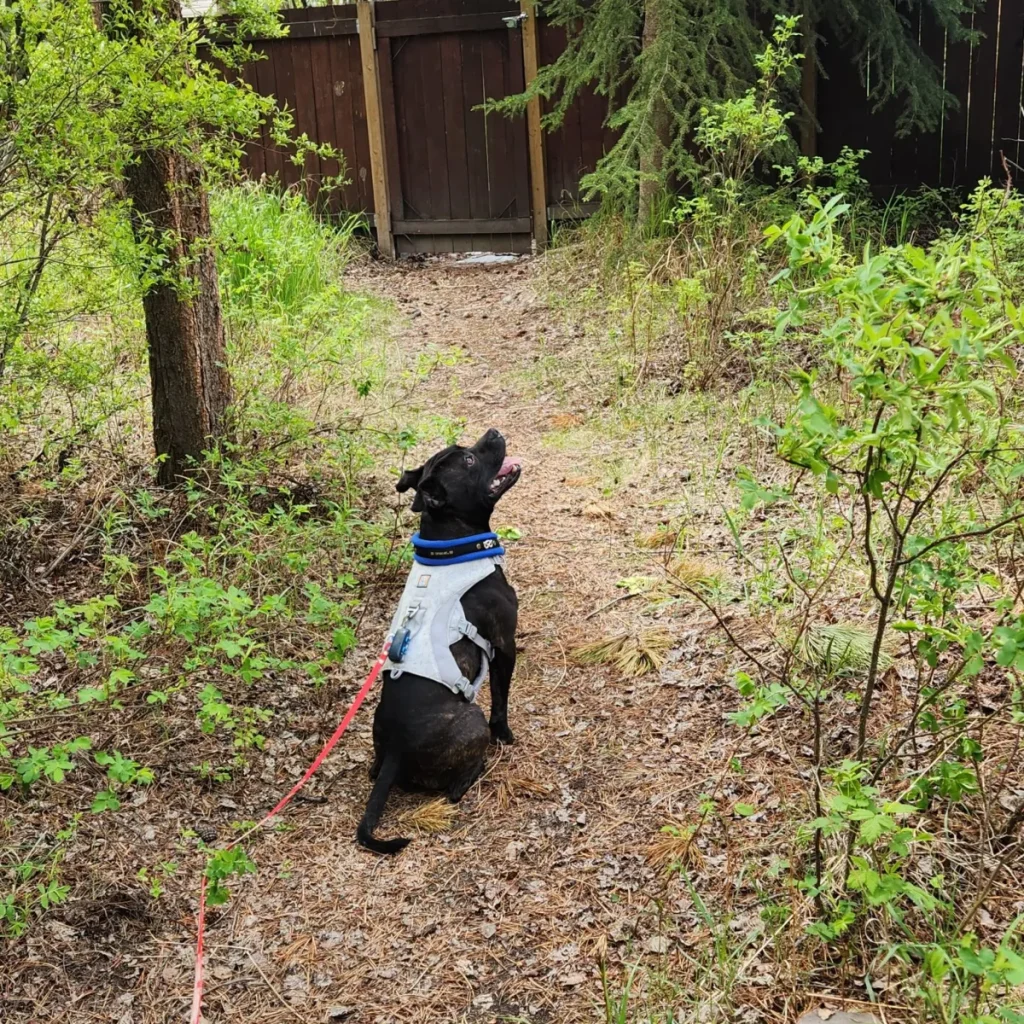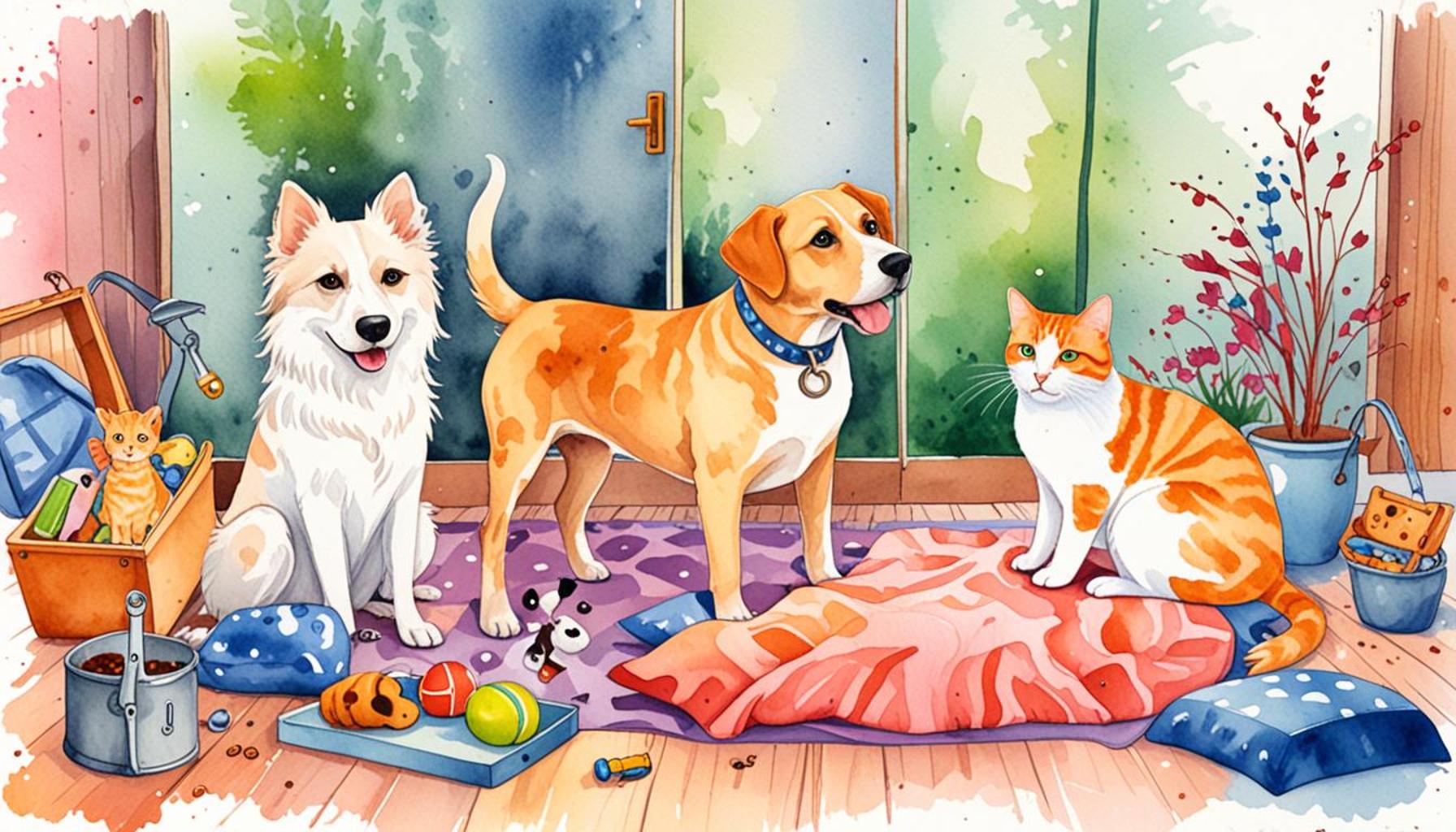Aggression Behavior in Pets: Causes and Solutions for a Harmonious Coexistence

Understanding the Roots of Aggression
Aggressive behavior in pets can create challenging situations not just for the animals but for their owners and families as well. Addressing this behavior involves a comprehensive understanding of its origins. Various factors can lead to aggression, and recognizing them is critical for effective intervention.
Fear and Anxiety
One significant trigger for aggression in pets is fear and anxiety. Pets, especially dogs and cats, can become aggressive when they perceive threats. For instance, a dog may growl or snap when approached unexpectedly, especially if it is sensitive or nervous in unfamiliar situations. It’s not uncommon to see these reactions during thunderstorms, fireworks, or when strangers enter their space. Understanding that fear-driven aggression is rooted in a desire to defend themselves is crucial. For example, a dog that has experienced abuse may be quick to react defensively in situations that seem reminiscent of past trauma.
Protective Instincts
Another vital factor leading to aggression is the protective instincts inherent in certain breeds. Breeds like German Shepherds and Rottweilers, known for their guarding abilities, may exhibit territorial behavior. They might bark ferociously at visitors or even attempt to bite if they perceive someone as an intruder. Recognizing it’s in their nature to protect their home helps owners understand and manage this behavior. Owners can address territorial aggression through consistent training that reinforces positive behaviors when visitors approach.
Frustration
Frustration-based aggression occurs when pets feel they cannot achieve what they want. For instance, an eager dog tethered to a leash may display aggression towards other dogs or people passing by due to a lack of ability to greet them. Similarly, a cat may hiss or swipe if it is unable to reach a toy or escape from a situation that is overwhelming. This form of aggression arises from an emotional response to thwarted desires and can often be mitigated by establishing proper training routines and outlets for expressing energy.
Implementing Effective Solutions
Understanding the root causes of aggression is essential, but it is also vital to implement effective solutions to foster a peaceful living environment. Several strategies can aid in reducing aggressive tendencies in pets.

Training and Socialization
One foundational solution is training and socialization. Early exposure to various environments, people, and other animals can greatly diminish aggressive behavior. Puppy classes that emphasize positive reinforcement can help in molding a pet’s behavior from an early age, thus creating well-adjusted adult animals. For example, socializing a dog with children and other pets in controlled environments allows it to become more comfortable and less reactive over time.
Behavior Modification Techniques
Another powerful tool is implementing behavior modification techniques. These techniques focus on changing the pet’s response to specific stimuli. For instance, using clicker training can reinforce desirable behaviors while discouraging aggressive responses. Owners can gradually introduce their pets to previously stressful situations while rewarding calm responses, which fosters positive behaviors over time.
Consulting Professionals
If behavior persists or escalates, it’s wise to seek the guidance of a professional. Engaging a veterinarian or an animal behaviorist can provide tailored advice that addresses unique situations. Qualified professionals can offer insights grounded in animal psychology and can recommend additional resources or specific training regimens appropriate for the pet’s temperament and behavior patterns.
Understanding the complexities of aggressive behaviors in pets enables owners to take informed and compassionate action. By addressing these behaviors thoughtfully and strategically, a harmonious coexistence between pets and their families is not only possible but greatly enriching for both parties involved.
DISCOVER MORE: Click here for essential puppy socialization tips
Diving Deeper into Aggression Triggers
To effectively manage aggressive behavior in pets, it’s imperative to delve deeper into the underlying triggers contributing to such actions. While fear and protective instincts are significant, several other factors can also influence pets’ responses to their environments, leading to aggressive outbursts.
Genetics and Breed Tendencies
One cardinal aspect to consider is the role of genetics and breed tendencies in aggressive behavior. Certain breeds are predisposed to react more aggressively owing to their historical roles. For instance, Terriers were initially bred for hunting and may display more assertive tendencies, while herding breeds, like Border Collies, can become nippy when trying to round up children or other pets. Understanding a breed’s natural characteristics enables owners to anticipate potential behavior patterns, allowing for proactive measures. By aligning training methods with breed tendencies, owners can often reduce incidents of aggression.
Medical and Health Issues
Another critical factor involves medical and health issues. Pets in pain or discomfort may resort to aggression as a defensive mechanism. Conditions such as arthritis, dental disease, or internal infections can trigger irritability and aggressive responses. Additionally, hormonal changes, particularly in unaltered animals, can escalate aggression. Regular veterinary check-ups can help identify underlying health problems that may cause behavioral changes. Keeping a close eye on your pet’s health can contribute to a more peaceful atmosphere in the home.
Lack of Routine and Stimulation
A lack of structured routine and mental stimulation can lead to unchecked energy and resultant behavioral issues, including aggression. Pets thrive on consistency, and without a regular schedule of exercise, play, and interaction, frustration can manifest as aggression. It’s crucial for pet owners to engage their animals in activities that provide both physical and mental stimulation. Consider the following ideas:
- Scheduled Exercise: Daily walks, play sessions, or outings can help dissipate pent-up energy.
- Interactive Toys: Puzzle toys or treat dispensers can keep your pet engaged and mentally challenged.
- Training Sessions: Daily practice of commands or tricks reinforces learning and builds mental resilience.
By providing a fulfilling routine, owners can significantly reduce the likelihood of aggressive behaviors stemming from stress and boredom.
Addressing Aggression with Proactive Strategies
Recognizing the multitude of factors that contribute to aggression is just the beginning. Implementing proactive strategies will facilitate not only a harmonious home environment but also a more enriching life for pets. These actionable steps lay the groundwork for effective interventions.
Ultimately, understanding the intricacies behind aggressive behavior in pets enables owners to take informed action. By fostering a tailored approach that considers both the psychological and physical well-being of pets, a path towards a peaceful coexistence is achievable.
Aggression in Pets: Understanding the Causes
Aggressive behavior in pets can often be a source of concern and bewilderment for pet owners. Understanding the root causes of this aggression is crucial to fostering a harmonious coexistence between pets and their families. Some common reasons for pet aggression include fear, territorial instincts, and even pain or medical issues. First, fear-based aggression is prevalent among pets who may feel threatened by unfamiliar surroundings or stimuli. This can lead to defensive behaviors, where pets lash out to protect themselves. Similarly, territorial aggression manifests when pets become protective of their living space, leading them to exhibit aggression toward perceived intruders, including other animals or even visitors. In some instances, aggression may stem from underlying health problems. Conditions such as arthritis, dental issues, or other pain-related illnesses can make animals irritable and quick to snap. This highlights the importance of regular veterinary check-ups in identifying any health-related issues that may contribute to an aggressive demeanor. Recognizing these causes is the first step towards effective management and resolution. With appropriate strategies—ranging from positive reinforcement training to behavioral therapy—owners can help mitigate aggressive tendencies, ensuring a safer and more fulfilling relationship. As we delve deeper into solutions, one can see how integrating knowledge and effective practices can lead to a better understanding of pet behavior.
| Category | Solution |
|---|---|
| Positive Reinforcement Training | Utilizing rewards to encourage desirable behaviors while minimizing aggression triggers. |
| Desensitization Techniques | Gradually exposing pets to fear-inducing stimuli in a controlled manner to reduce aggressive reactions. |
In addition to these solutions, it is essential for pet owners to understand their pets’ socialization needs. Socialization plays a vital role in reducing aggression by helping pets develop confidence and learn appropriate behaviors in various situations. Taking steps to properly address aggression not only improves the lives of pets but also fosters a peaceful home environment for everyone involved. Learning about the triggers and appropriate responses can lead to an insightful journey into understanding pet behavior, making the quest for a harmonious coexistence a fulfilling endeavor.
DISCOVER MORE: Click here for helpful tips
Implementing Behavior Modification Techniques
Once the underlying causes of aggression behavior in pets are identified, implementing behavior modification techniques becomes crucial for fostering a serene home environment. The goal is to reshape your pet’s responses to stimuli that might provoke aggressive behavior.
Positive Reinforcement Training
One of the most effective methods for addressing aggression is through positive reinforcement training. This technique relies on rewarding desired behaviors rather than punishing undesirable ones. For example, if a dog tends to growl at strangers, rewarding calm behavior when a stranger is in the vicinity can help build positive associations. Using treats, praise, or playtime as rewards encourages pets to display more desirable behaviors. Over time, with consistent training, pets can learn to respond more appropriately to previously triggering situations.
Desensitization and Counter-Conditioning
Another powerful approach is desensitization and counter-conditioning. This method involves gradually exposing pets to whatever provokes their aggression in a controlled manner while simultaneously offering positive reinforcement. For instance, if a cat reacts aggressively to visitors, start by having guests sit quietly at a distance. Reward your cat for calmly observing the visitors, gradually decreasing the distance over time as they become more comfortable. This technique helps modify their emotional response to the trigger and can significantly reduce aggressive reactions.
Seeking Professional Assistance
While many pet owners are capable of managing aggression through consistent training, there are instances where professional assistance is warranted. Certified animal behaviorists or trainers specializing in aggressive behavior can provide tailored guidance and strategies to address unique situations. These professionals can assess your pet’s specific behaviors and devise a customized plan that best fits your pet’s needs, leading to more effective outcomes. Additionally, referring to local resources, such as the American Kennel Club (AKC) or the Association of Professional Dog Trainers (APDT), can connect owners with reputable professionals.
Environmental Management
Alongside behavioral techniques, environmental management can greatly reduce instances of aggression in pets. Creating a safe space for your pet is vital. This could include:
- Safe Zones: Designate areas in the home where your pet can retreat when feeling stressed or threatened.
- Physical Barriers: Use gates, crates, or separate rooms to prevent unwanted interactions that might escalate aggression.
- Controlled Socialization: Monitor and control interactions with other pets and strangers, particularly in situations known to trigger aggressive responses.
By adjusting your pet’s environment, you can often prevent aggressive incidents before they occur.
Behavioral Enrichment
Lastly, behavioral enrichment plays a vital role in reducing aggression. Engaging pets with interactive toys, exploring new walking routes, or introducing puzzle feeders can satisfy their natural instincts and provide mental stimulation. Engage in training classes, agility exercises, or canine sports to promote socialization and mental engagement. Having a well-rounded routine keeps your pet motivated and can significantly diminish frustration-driven aggression.
By implementing these multifaceted strategies, pet owners can promote a peaceful atmosphere that not only addresses aggression but also enhances the overall quality of life for both pets and their families.
DISCOVER MORE: Click here to find local animal shelters
Conclusion: Cultivating Harmony with Our Pets
Aggression behavior in pets can be a complex issue, with roots often embedded in fear, frustration, or lack of socialization. Understanding the driving forces behind this behavior is essential not only for the safety of our pets but also for maintaining a peaceful home environment. Through the implementation of positive reinforcement training, desensitization techniques, and environmental management, pet owners can create a framework that promotes harmonious coexistence. It’s crucial to remember that there is no one-size-fits-all solution; what works for one pet may not be effective for another.
Furthermore, recognizing when to seek professional assistance can be a game-changer. Experts can provide tailored strategies that address specific behavioral issues, leading to more effective outcomes. Additionally, engaging in behavioral enrichment activities not only enhances the pet’s quality of life but also minimizes aggressive tendencies by addressing boredom and pent-up energy.
Ultimately, fostering a nurturing and understanding relationship with our pets is key. By committing to this multi-faceted approach, we can transform our pets’ aggressive behavior into cooperative companionship, leading to a fulfilling and safe family life. Exploring community resources such as local training classes or behavior workshops can further support pet owners on this journey. Embracing patience, knowledge, and compassion will pave the way for a harmonious coexistence with our furry friends.



